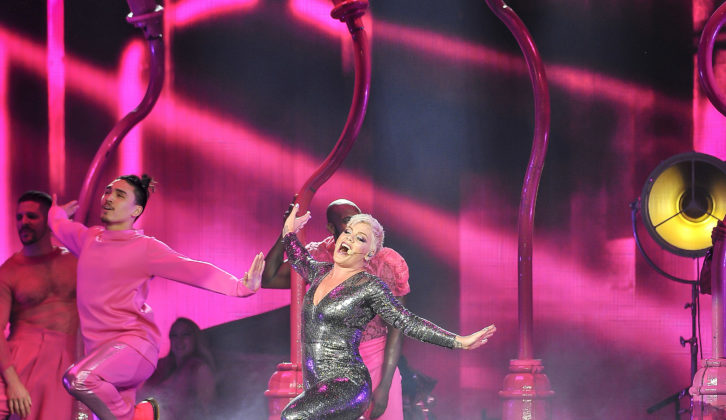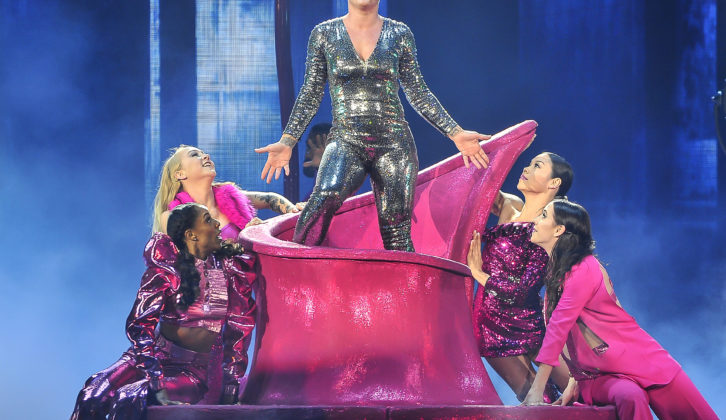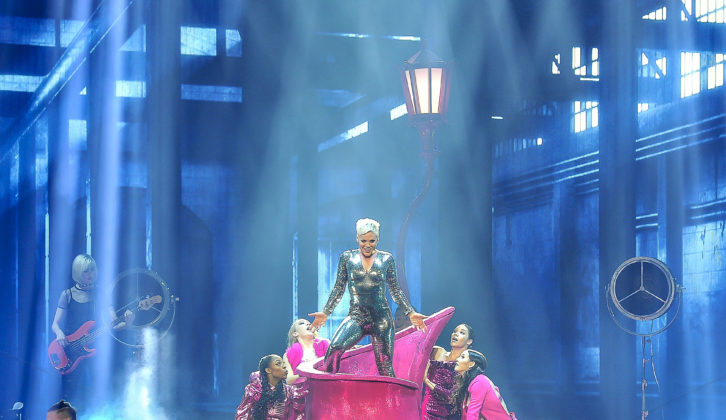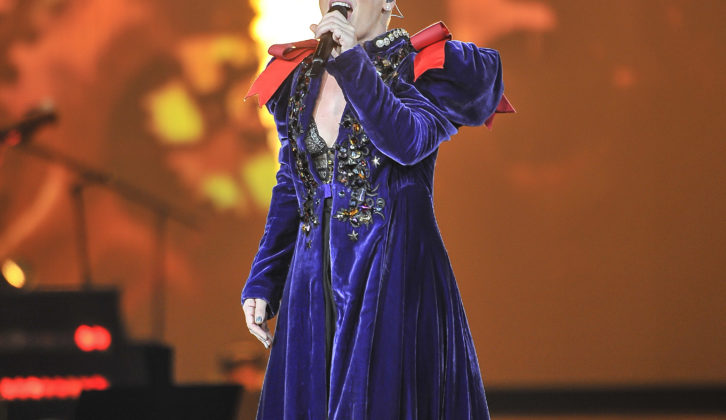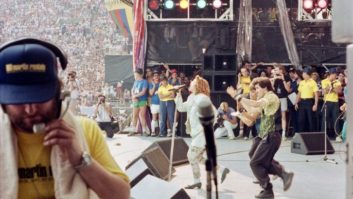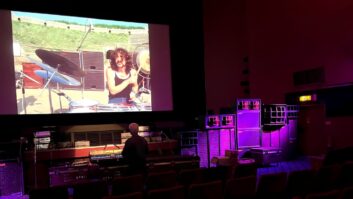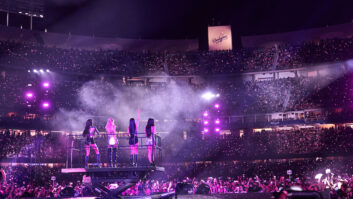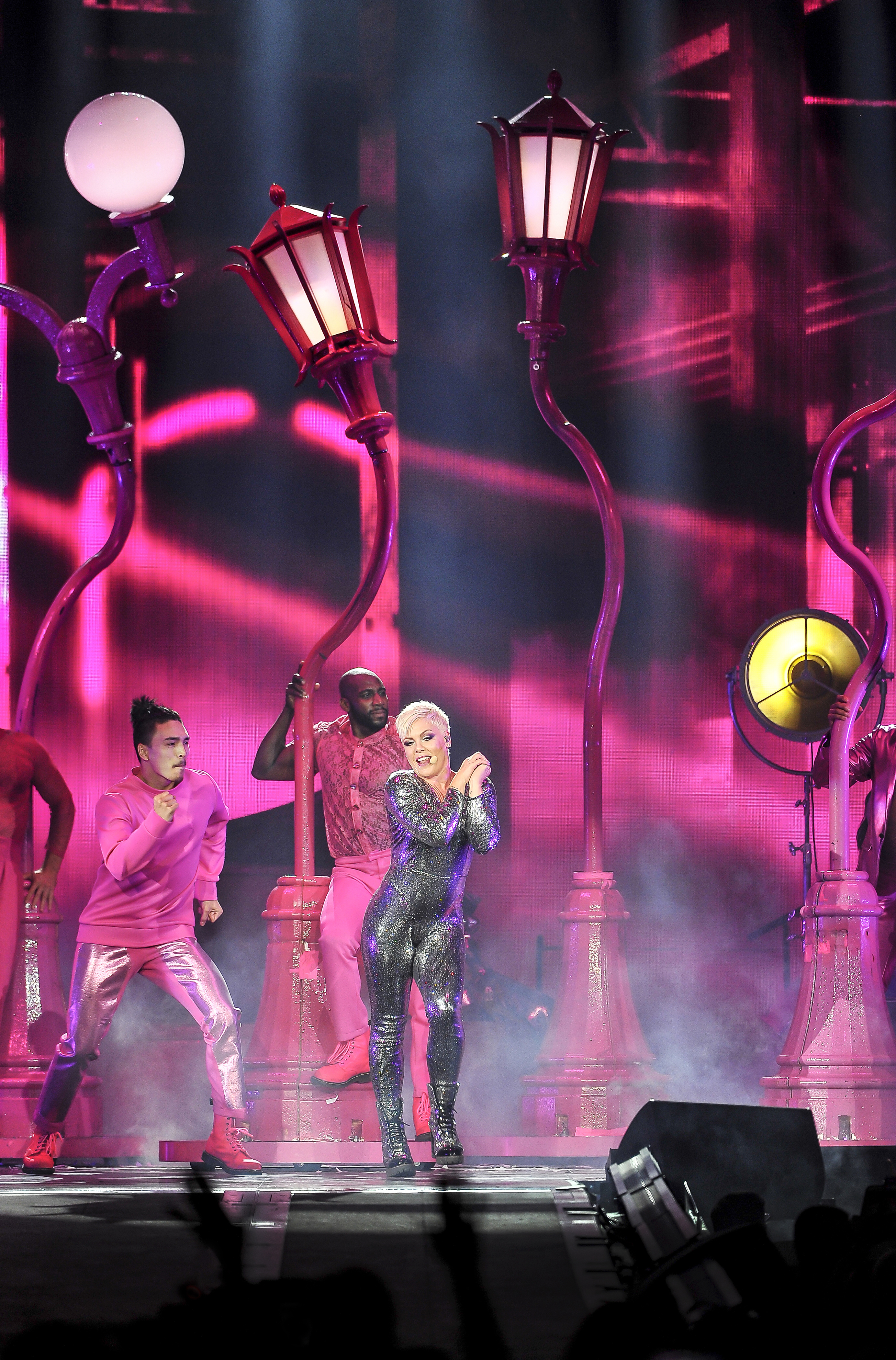
Pink is in the midst of one of the biggest tours of the year, having left the States recently for a summer in Australia, then back again in the spring of 2019. Mix caught her during a two-night stand at Oakland’s Oracle Arena. Production is provided by Clair Brothers, with an ace sound crew headed by FOH engineer Dave Bracey (Adele, Depeche Mode, Björk), Pink monitor engineer Jon Lewis (AC/DC, Cher), band monitor engineer Horst Hartmann (Sade, Cher), systems tech Johnny Keirle (Foo Fighters, Adele), and playback tech Joe Wolfe.
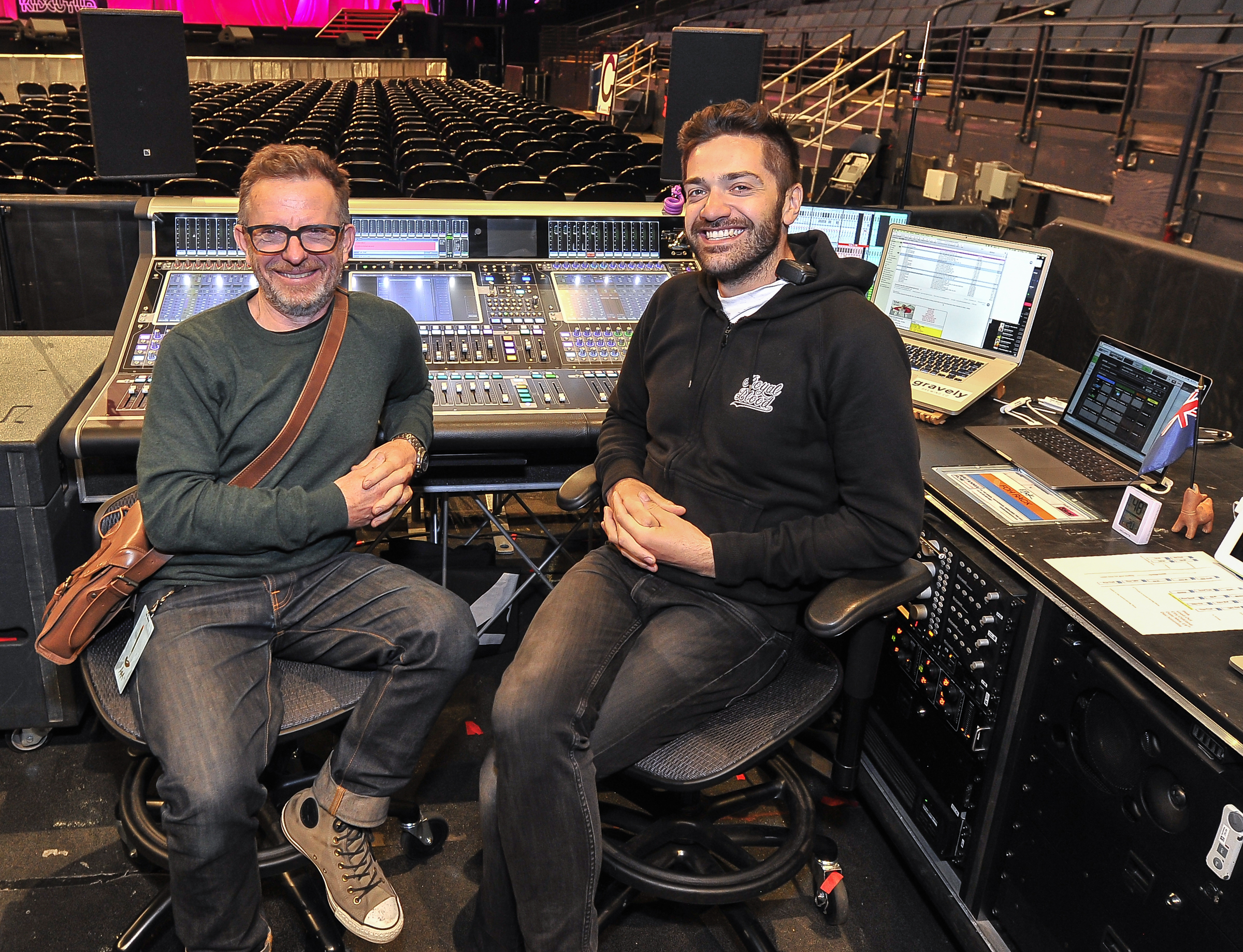
FOH engineer Dave Bracey, left, pictured with Clair systems tech Johnny Keirle, is mixing the tour on a DiGiCo SD7 console, a board he’s used since the summer of 2008. “It’s an easy board to mix on, and I like the large surface I can work with in the DiGiCo range—48 faders and 24 channel strips, all within easy reach. I never use plug-ins—never had a need to live. Outboard from the console, I use only 4-times Bricasti M7 reverbs for the Pink show, in addition to the onboard FX, of which a couple are irreplaceable for me.”
Bracey prefers to mix the show on the right center of the main floor instead of the traditional center FOH position further back; he feels it represents more of what the majority of the audience is getting audio-wise.
“Pink is one of the best vocalists on the planet, so it’s a true pleasure mixing her each night,” he says. “If anyone can sing in front of a P.A. system, it’s her. She moves around a lot, from the main stage onto the heart-shaped runway extending out into the audience or flying though the air around the arena. She’s the real deal. Then good microphones and a careful cooperation between monitors and FOH get the results.”
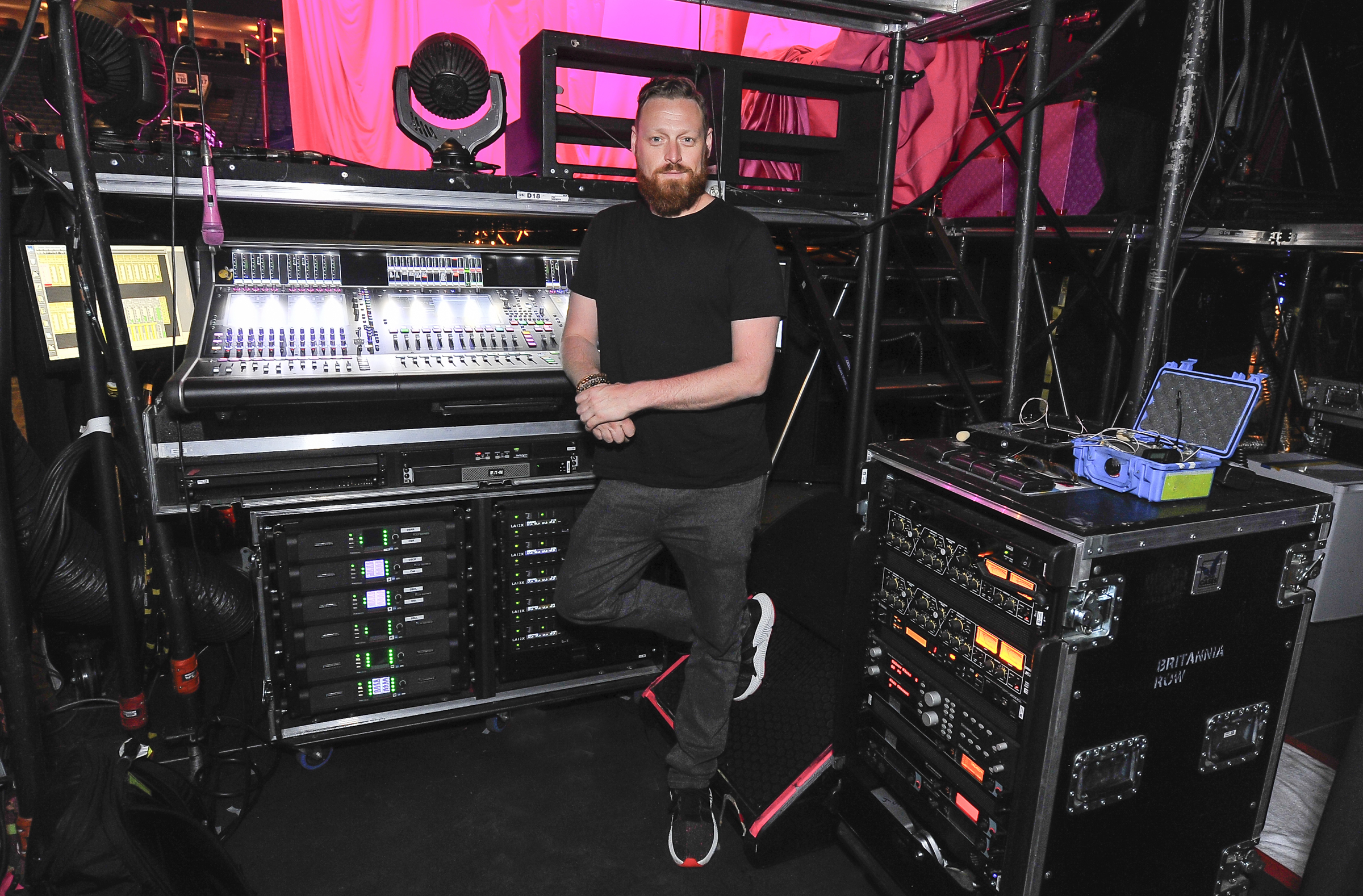
Jon Lewis mixes monitors for Pink on a DiGiCo SD7 console. “I like the flexibility, layout and obvious audio quality, which makes it the standard that others try to replicate,” he says. “Most FX and processing is onboard, but my vocal FX and processing is outboard. I use Bricasti M7 for my vocal reverbs and a Drawmer 1973 as a final compressor on my outputs. I’m a recent convert to the Bricasti products but have quickly become a fan. Depth, clarity and quality of the reverb tails are amazing.”
The stage is set up with a combination of wedges, sidefills and in-ears. Pink uses only one in-ear. “I have a combination of the Clair Brothers CM22, L-Acoustics X15 and L-Acoustics KARA on stage,” Lewis explains. “The X15 are used on the three runways in front of the downstage edge because I want to keep the interaction between the wedge mixes and the P.A. and mic as non-clashing as possible. L-Acoustics monitors have very similar voicing across their entire product range, so it allows a smoother transition from behind to inform the P.A. The runways are covered by 20 of the X15 wedges.”
Related:
• All Access with Miranda Lambert on the Livin’ Like Hippies Tour, by Steve Jennings, April 4, 2018
• Tour Profile: Ed Sheeran, by Steve Jennings, Dec. 18, 2014
• All Access: Arcade Fire, by Steve Jennings, Jan. 5, 2018
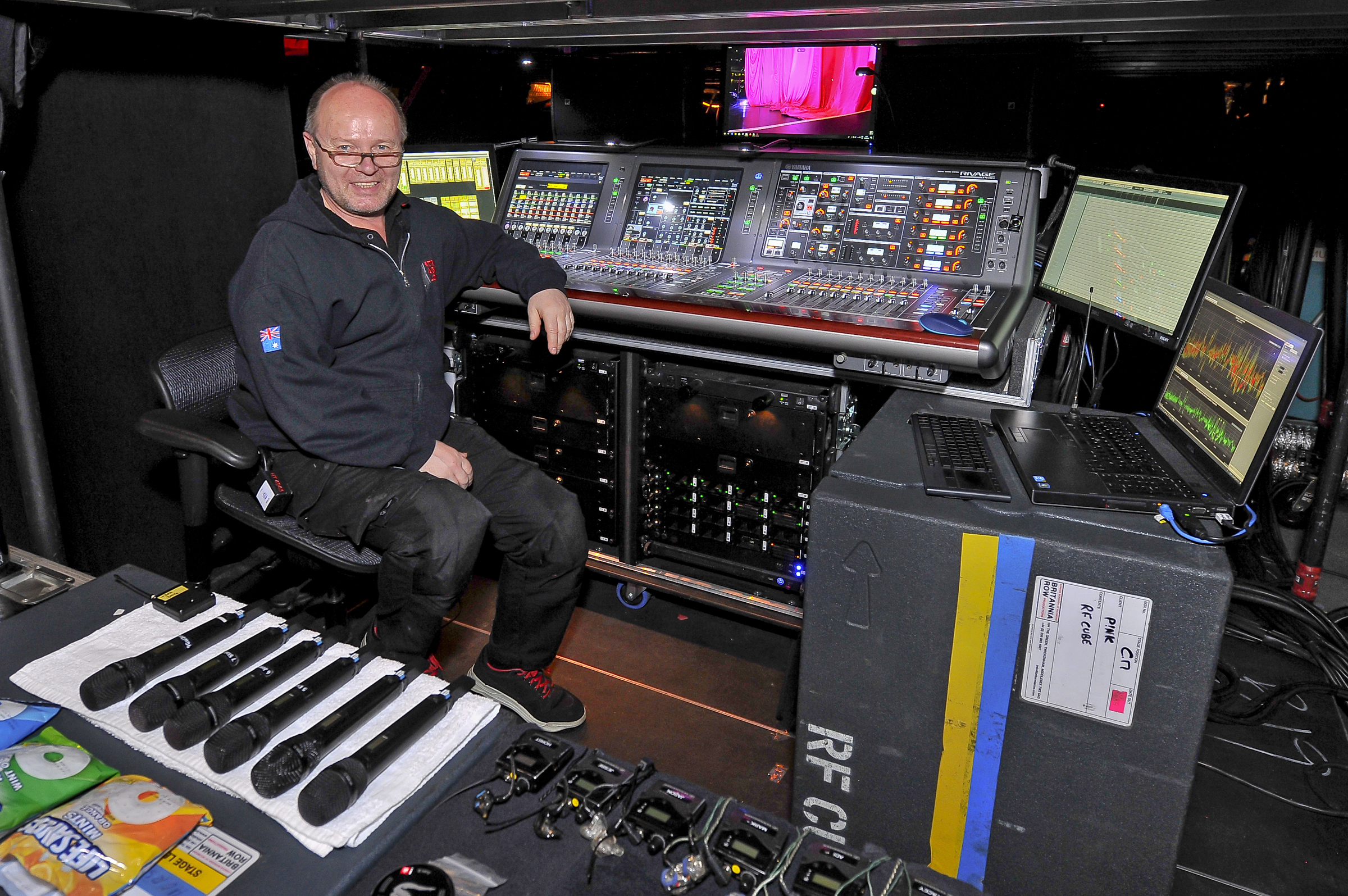
Band monitor engineer Horst Hartmann is mixing on a Yamaha PM10 console. “I’m using just what’s in the console—10-times X-Revs for reverbs and 8-times the 1176 plug-in on all the vocals,” he says. “I don’t use any outboard gear. The EQs, compressors, gates, FX and plug-ins in the console are great, nothing more is needed. In mixing the band members, I like to put a big reverb with a long predelay—100 milliseconds—on vocals to simulate a big arena wherever you are. I like parallel compression on guitars, with two channels: one hard, and one with soft compression. I gate every line input like keyboards, tracks and DI at -60 to keep the noise floor down.”
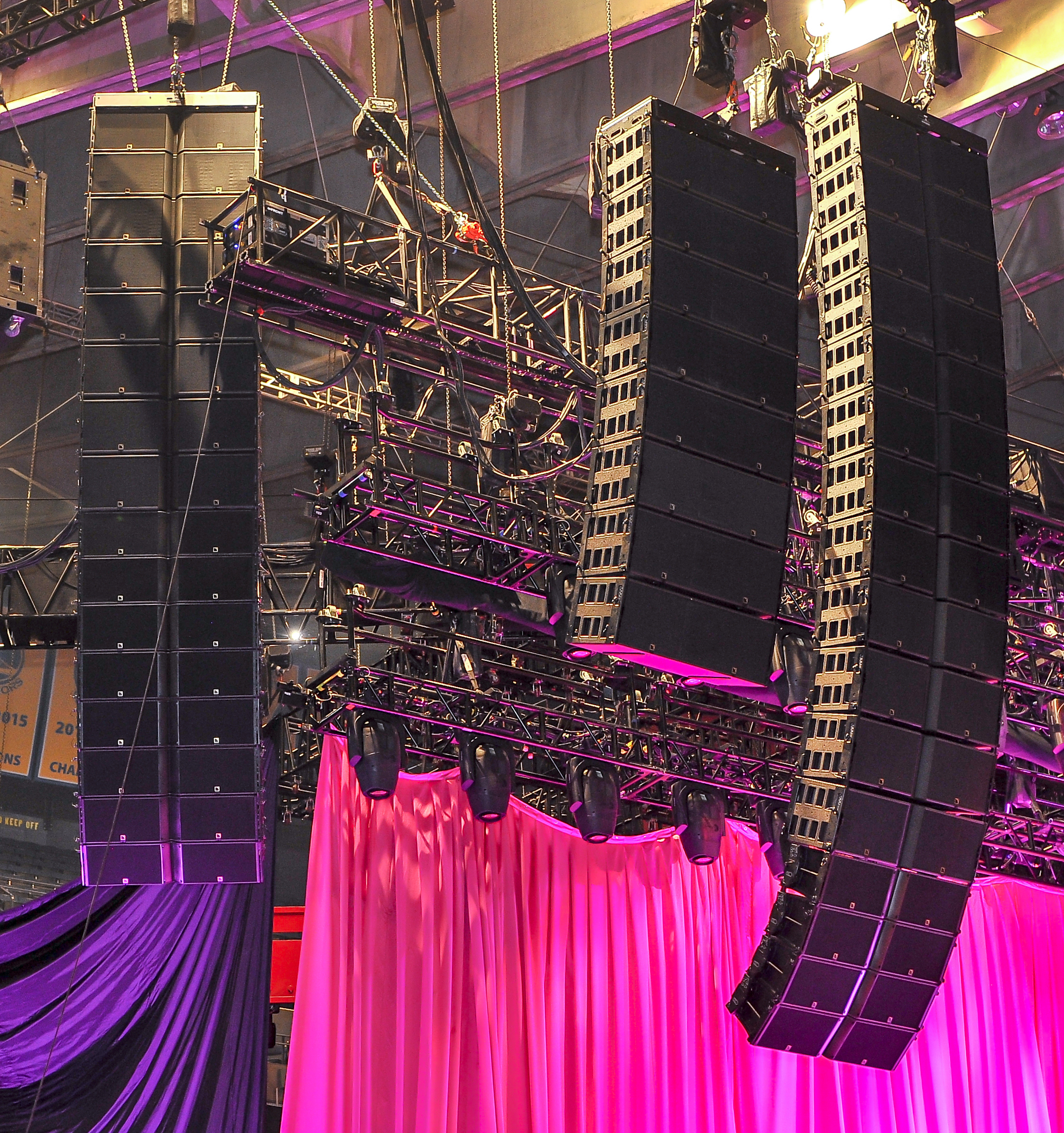
Clair Brothers is the tour audio provider. The P.A. system provided by Clair Brothers and managed by systems tech Johnny Keirle is all L-Acoustics. The main hang per side includes 12 K1, four K2 and eight K15B flown subs. Side hang fills are eight K1 and eight K2. Rear/270-degree hangs are 12 K2. The two delay zones are each eight K2. Ground subs are 27 KS28. Front fills are six KARA.
“The entire system is powered by LA12X amplification with a fully digital 96 kHz signal path from mixing console to amplifier output,” Keirle says. “All signal distribution is handled by Lake LM44s and LM26s with multiple stages of both auto-switching digital redundancies and a manual switching, fully analog redundant. All amplification is flown to reduce cable length and to minimize our ground footprint.”
The physically spaced sub array under the stage includes 27 KS28 boxes in nine cardioid clusters of three subs. “This went through various versions and revisions, and the design was changing ever-so-slightly all the way up to the beginning of production rehearsals,” Keirle says. “Every stage revision required a redesign of the arc to ensure all sub clusters would fit around the stage legs, braces, prop lifts, quick change areas, etc. Physical arcs offer the most uniform sub coverage. We have a very wide stage with no space for traditional sub stacks left and right. The physical arc under the stage is the best option for us sonically, as well as for physical layout.”
Related:
• Live: Valerie June on the Order of Time Tour, by Todd Berkowitz, Jan. 31, 2018
• All Access: U2 iNNOCENCE + eXPERIENCE Tour 2015, by Steve Jennings, July 2, 2015
• Tom Petty and the Heartbreakers, by Sarah Jones, July 27, 2017
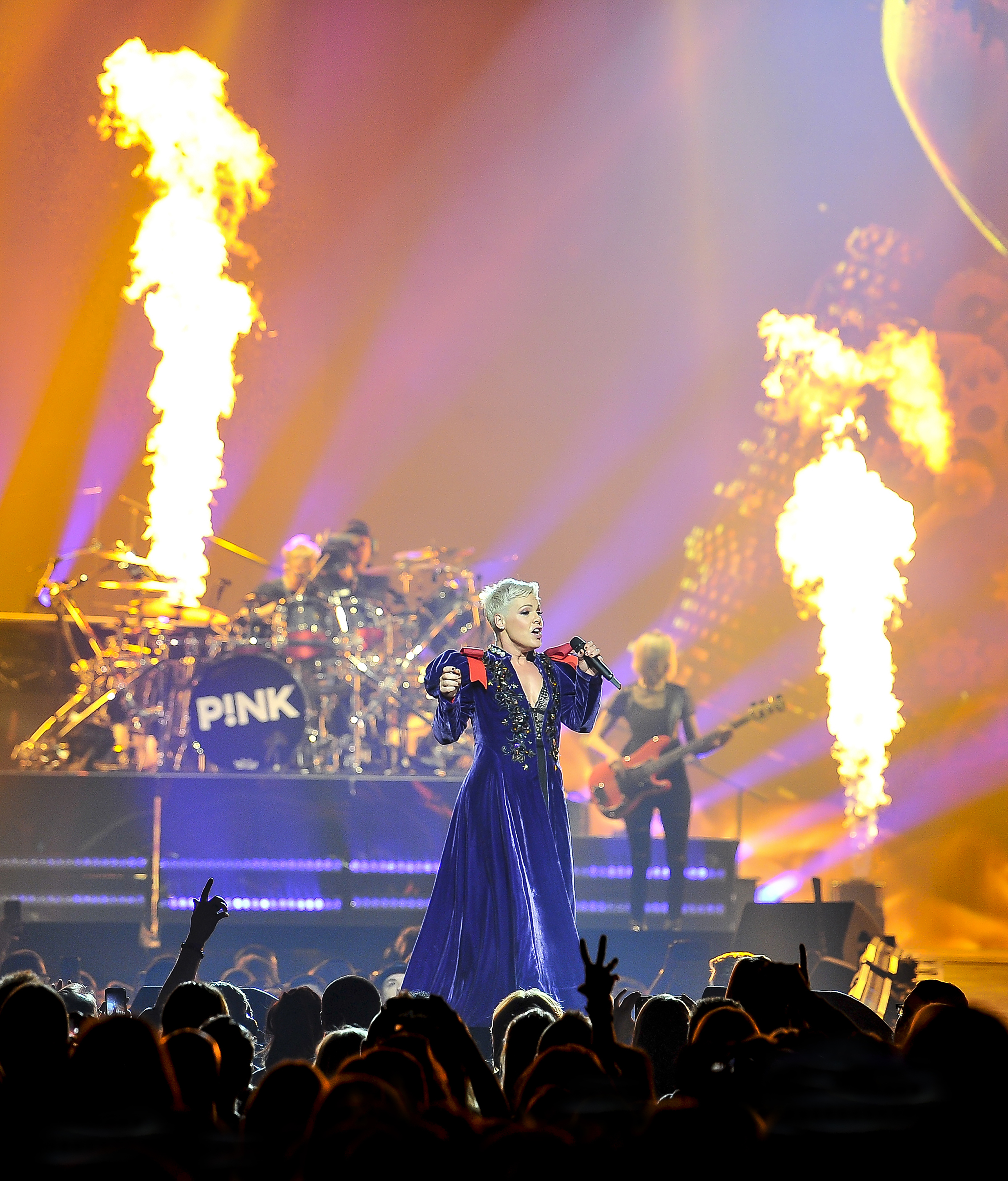
Pink sings into a new Sennheiser 9235 head on the handheld microphone, with the vocal wireless on a Digital 6000 system. “It sounds great and is suited to the type of levels we have on stage and the fact that so much of the show is in front of the P.A.,” says monitor engineer Lewis. “The headset we use is a custom mic that integrates into the in-ear molds to allow the vocal quality to remain through all the acrobatic events of the show. The design allows us to keep a constant microphone position even if she is upside down flying over the audience. This has been an evolution over the last few tours in conjunction with Sennheiser.
“Mixes can change quite drastically from the center position to the high-flying acrobatics of a song like ‘Secrets,’ where she spends most of the song suspended upside down above the stage and audience,” he adds. “It’s very much a zonal approach to mixing the stage—creating areas that are filled with the information that is needed by her for the activity of that song.”
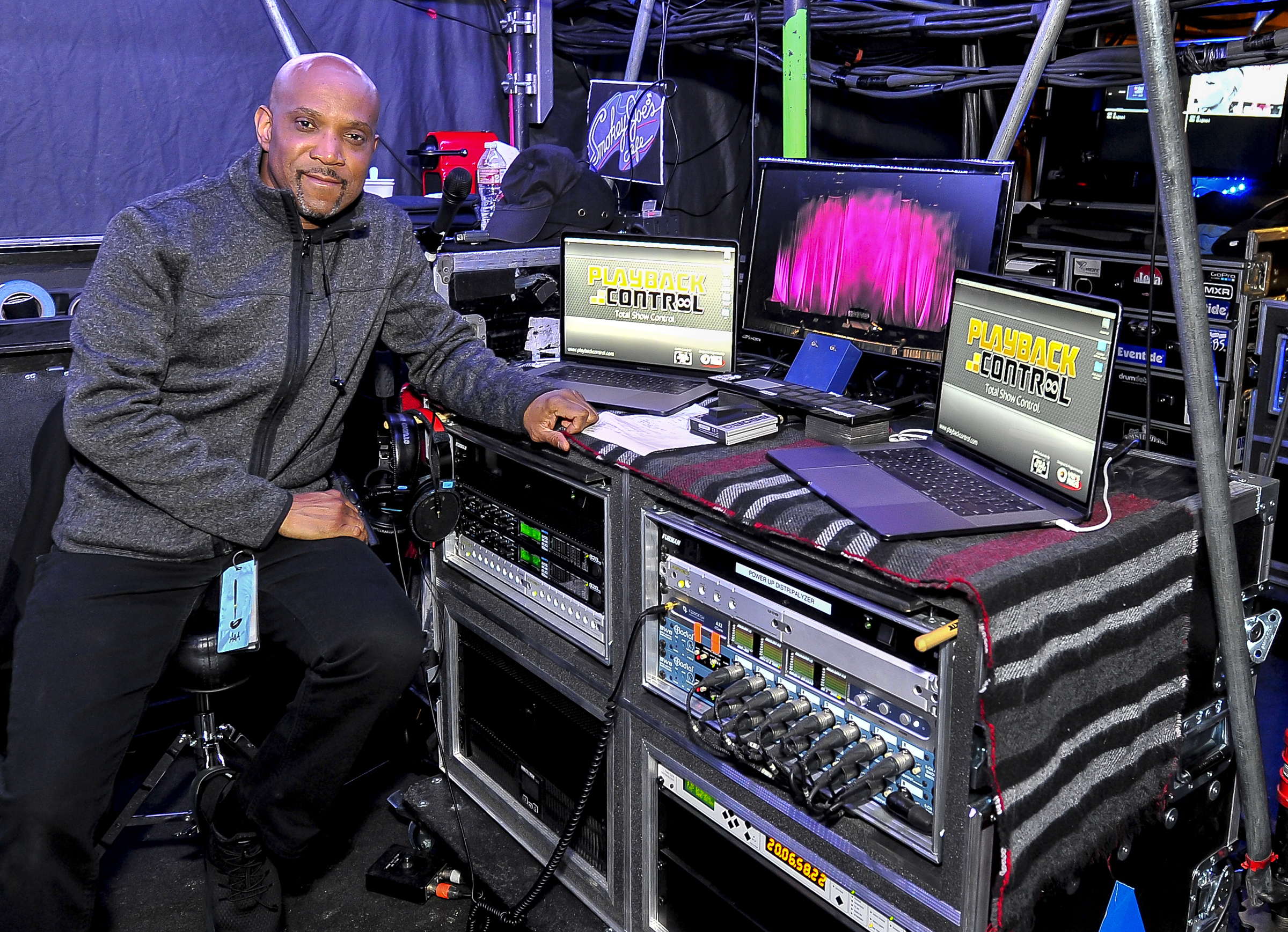
“My duties include generating timecode, sync and additional audio content interfacing the band, video, lighting and automation,” says Joe Wolfe, audio playback tech and programmer. “I’m using a PlaybackControl rig designed by Viggy and his awesome team at PlaybackControl/Tour Supply.”
Related:
• Red Hot Chili Peppers on The Getaway Tour, by Steve Jennings, April 11, 2017
• Tour Profile: The Rolling Stones, A Bigger Bang Tour, by Sarah Jones, Jan. 1, 2006
• U2 360 Tour Profile, by Kevin Becka and Steve Jennings, Dec. 1, 2009
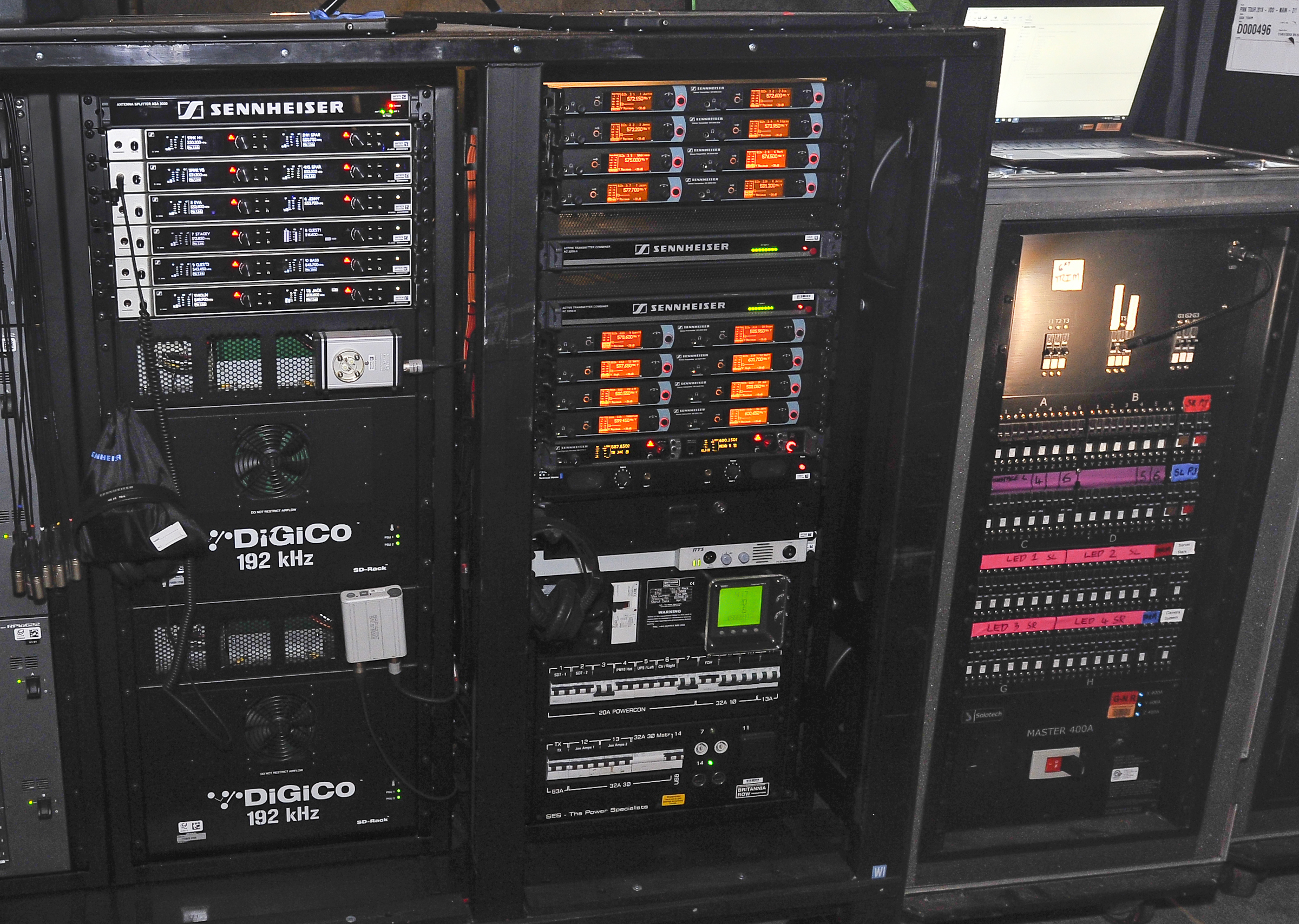
Band members are all on JH Audio Roxanne IEMs, and they all use Sennheiser IEM 2000 wireless systems. There are four buttkickers (inset) for the bass player underneath the stage bass riser and four under the keyboard risers. The drummer has simply a wireless IEM, no shaker.
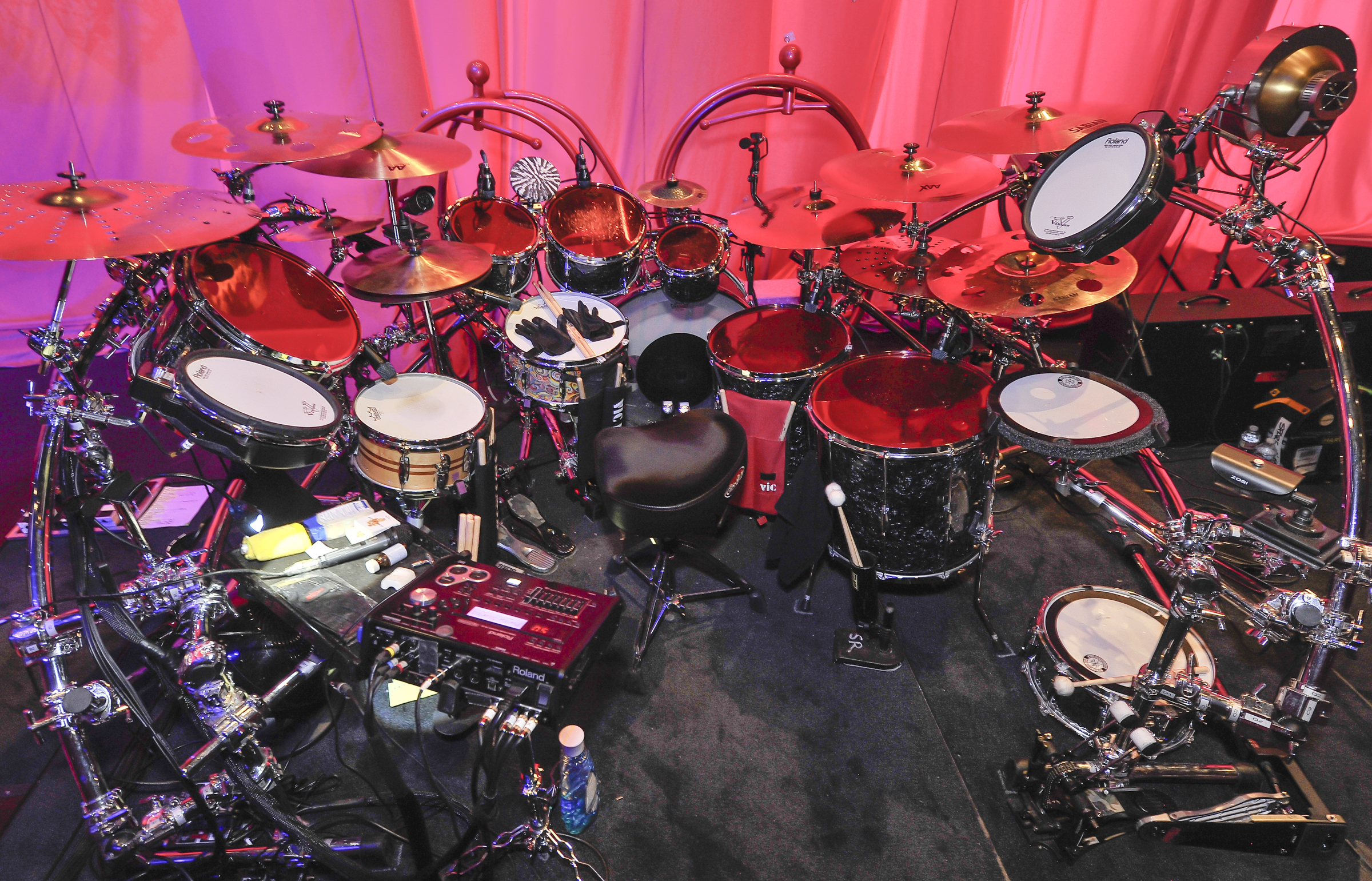
The drum miking scheme reflects the band’s relationship with Sennheiser, with Evolution E 901 and E 902 on kick; E 904 and E 905 on snares; E 904 on toms; plus Audio-Technica ATM450 on hat, cymbals and first drum tom.
Want more stories like this? Subscribe to our newsletter and get it delivered right to your inbox.
